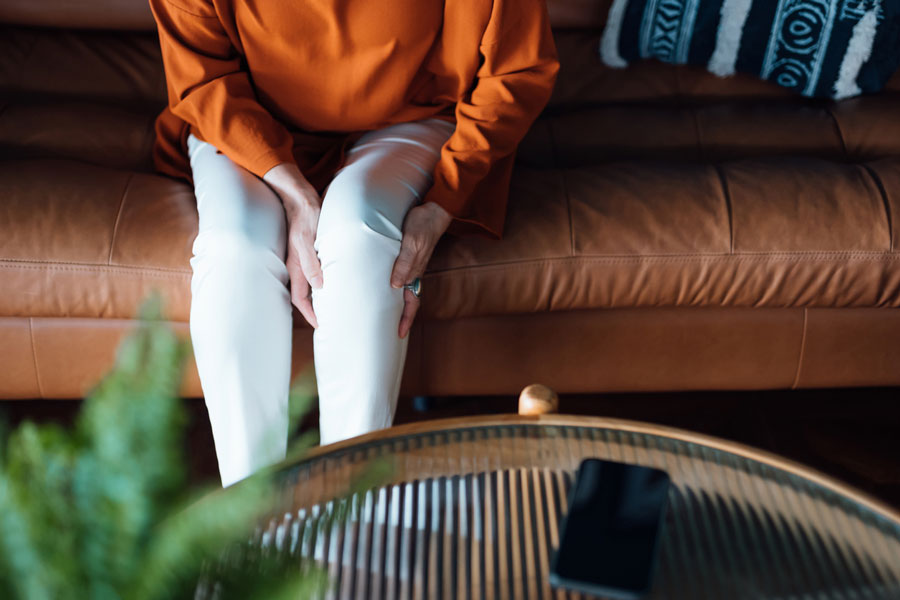
Returning to a Life Without Pain: Barbara’s Story
Improving Quality of Life, Orthopedic Conditions, Pain
Barbara Ford
Barbara Ford never imagined herself using a cane at age 52. But chronic pain stemming from osteoarthritis was making it more and more difficult to walk just the short distance from her bedroom to the kitchen. Even after a total knee replacement, Barbara’s chronic pain persisted. But then her health care team identified an innovative medtech pain management solution.
An Unsurprising Diagnosis, But a Shocking Amount of Pain
Osteoarthritis runs in Barbara’s family. So when her osteoarthritis knee pain grew almost unbearable, she figured a total knee replacement would solve the problem, like it had for her relatives.
“I thought that I would just have the total knee replacement and that would be it,” she said. “I could move on with my life without the pain I’d been experiencing for so long.”
Unfortunately for Barbara, that wasn’t the case. Her pain only grew more severe.
Her mobility became extremely limited, and she switched from a cane to a walker. Housework – like cooking, dusting and vacuuming – seemed nearly impossible most days. At the end of her workday as a dental assistant and office manager, she was often reduced to tears making the walk to her car.
But most excruciating of all was her condition’s effect on her family. She couldn’t enjoy what were once her favorite activities: shopping with her 20- and 22-year-old daughters and walking her Australian shepherds, Jamima and Bowie.
A New Path Forward
Desperate for relief and a return to her active lifestyle, Barbara consulted her orthopedist, who confirmed that Barbara’s pain wasn’t a result of her surgery and suggested a variety of pain management options.
She took prescription narcotics, but found she was extremely sensitive to them. She received cortisone shots, but couldn’t feel a noticeable difference in her pain levels. Eventually, Barbara was referred to a pain management specialist, Dr. Timothy Lubenow at Rush University Medical Center in Chicago, who suggested she try an innovative medtech genicular nerve radiofrequency ablation.
During the procedure, a generator device would transmit a small current of radiofrequency energy into Barbara’s knee tissue and thermally deactivate the sensory nerves sending pain signals to her brain. The procedure would be minimally-invasive, done in a comfortable outpatient setting.
“Patient care is paramount, and [this technology] provides my patients with long lasting pain relief and eliminates the need for me to prescribe oral pain medication,” Dr. Lubenow said.
Immediately following the procedure, Barbara was stunned: her pain was almost completely gone. She returned home optimistic, but uncertain.
“I was hopeful that this was going to continue to work, but based on my past experiences, I couldn’t help but be a little skeptical,” she said. “The next day, I was proved wrong. For the first time in many years, I remembered what it felt like to live without excruciating pain in my knee.”
Today, Barbara has ditched her canes and walkers in favor of an energetic, vigorous life. She’s shopping with her daughters and walking her dogs again. She’s dancing in the crowd at her husband’s band’s shows each weekend. She’s even practicing tai chi and biking each week.
“This was such an easy procedure, and I’ve had such an amazing result,” said Barbara. “It’s a fantastic option for those who are suffering like I was. I only wished I’d tried it sooner.”
Read more about medical technology’s role in pain management.